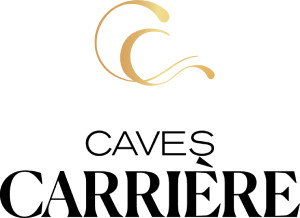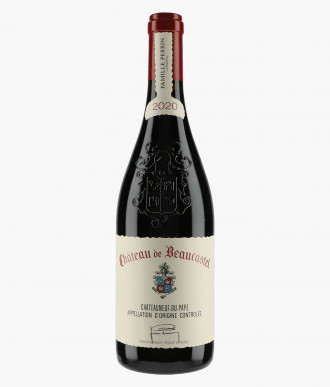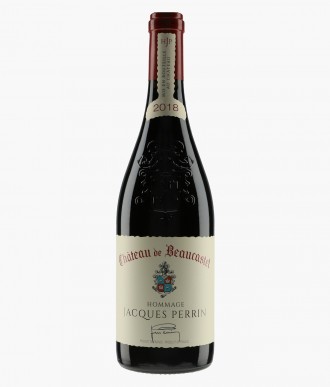-
MenuBack
-
Our Wines
-
-
-
-
Colors
-
-
-
GIFT CARDS
-
-
Offers
-
-
-
Wine Estates
-
BOURGOGNE
-
-
Titre bourgogne
- A
- A & P DE VILLAINE
- ALADAME STEPHANE
- AMIOT ET FILS
- AMIOT LEON
- ANDRE
- ARLAUD
- ARLAUD CYPRIEN
- ARLOT
- ARNOUX ROBERT
- ARNOUX-LACHAUX
- AUDOIN
- B
- BACHELET BERTRAND
- BACHELET JEAN-CLAUDE
- BACHELET-MONNOT
- BACHEY-LEGROS
- BAILLOT ARNAUD
- BAILLOT VAN CANNEYT LAURE
- BALLAND-CURTET
- BALLOT-MILLOT
- BART
- BARTHOD GHISLAINE
- BAVARD JACQUES
- BELLAND ROGER
- BELLENE ROCK
- BELLEVILLE
- BERLANCOURT ADRIEN
- BERTHAUT-GERBET
- BERTHEAU FRANCOIS
- BERTHELEMOT
- BILLAUD-SIMON
- BIZE SIMON
- BLAIN MARC-ANTONIN
- BOCCON THOMAS
- BOIGELOT ERIC
- BOILLOT HENRI
- BOILLOT JEAN-MARC
- BOISSET JEAN-CLAUDE
- BOISSON ANNE
- BOISSON PIERRE
- BONGRAN
- BONNEAU DU MARTRAY
- BORGEOT
- BOUCHARD AINE
- BOUCHARD PERE & FILS
- BOULEY JEAN-MARC
- BOULEY PIERRICK
- BOUVIER RENE
- BOUZEREAU MICHEL
- BROTHER & SISTER DRINKS
- BURGUET NICOLAS
- BZIKOT PERE & FILS
- C
- CACHEUX JACQUES
- CASSIOPEE
- CATHIARD SYLVAIN
- CELLIER AUX MOINES
- CHABLISIENNE
- CHABLISIENNE - ICAUNA
- CHAMPY BORIS
- CHARTON VINCENT & JEAN-PIERRE
- CHATEAU DE LA TOUR
- CHATEAU DE MARSANNAY
- CHATEAU DE MEURSAULT
- CHAVY ALAIN
- CHAVY JEAN-LOUIS
- CHAVY PAUL
- CHAVY-CHOUET
- CHEURLIN NOELLAT Maxime
- CHEVILLON ROBERT
- CHEZEAUX JEROME
- CHÂTEAU DE CHAMIREY
- CLAIR BRUNO
- CLERGET CHRISTIAN
- CLERGET YVON
- CLOS DE LA CHAPELLE
- CLOS DU MOULIN AUX MOINES
- CLOS SAINT JOSEPH
- COCHE FABIEN
- COFFINET-DUVERNAY
- COLIN BRUNO
- COLIN JOSEPH
- COLIN MARC
- COLIN SIMON
- COLIN-MOREY PIERRE-YVES
- COLLOTTE
- COMTE SENARD
- COMTES LAFON
- CONFURON JEAN-JACQUES
- COQUARD LOISON FLEUROT
- COTTENCEAU MAXIME
- D
- DAMPT
- DANCER THEO
- DANCER VINCENT
- DAUVISSAT JEAN & FILS
- DAUVISSAT RENE & VINCENT
- DE MONTILLE
- DE SUREMAIN ERIC
- DE VOGÜE
- DEFAIX BERNARD
- DELAGRANGE HENRI
- DIDON
- DOMAINE CAMILLE THIRIET
- DOMAINE DE LA CRAS
- DOMAINE DE LA TOUR PENET
- DROIN JEAN PAUL & BENOIT
- DROUHIN JOSEPH
- DROUHIN-LAROZE
- DROUHIN-VAUDON
- DUBUET-BOILLOT
- DUGAT CLAUDE
- DUGAT-PY BERNARD
- DUJAC
- DUJARDIN
- DUPONT-FAHN
- DUROCHE
- F
- FAIVELEY
- FELETTIG
- FELIX-HELIX
- FERRET J.A
- FEUILLET FRANCOIS
- FEVRE WILLIAM
- FONTAINE-GAGNARD
- FOURRIER DOMAINE
- FOURRIER JEAN-MARIE
- G
- GALEYRAND JERÔME
- GAMBAL ALEX
- GARAUDET FLORENT
- GARENNE
- GAUNOUX MICHEL
- GELIN PIERRE
- GENOT-BOULANGER
- GERMAIN HENRI
- GIBOURG ROBERT
- GIRARDIN PIERRE
- GIRARDIN VINCENT
- GIROUD CAMILLE
- GLANTENAY THIERRY
- GRAS ALAIN
- GRIVAULT ALBERT
- GRIVOT JEAN
- GROFFIER ROBERT PERE & FILS
- GROS ANNE
- GUYON JEAN-PIERRE
- H
- HARMAND-GEOFFROY
- HEILLY-HUBERDEAU
- HEITZ ARMAND
- HERESZTYN-MAZZINI
- HERITIERS DU COMTE LAFON
- HOSPICES DE BEAUNE
- HUDELOT-NOELLAT
- HUMBERT FRERES
- J
- JACQUESON PAUL
- JADOT LOUIS
- JAEGER-DEFAIX
- JAVILLIER PATRICK
- JEANNOT
- JESSIAUME JB
- JOBARD ANTOINE
- JOBLOT
- JOLIET
- JOUAN OLIVIER
- JULIEN GERARD
- L
- LA COMMARAINE
- LA PIERRE RONDE - ANTOINE LEPETIT DE LA BIGNE
- LABET PIERRE
- LAFARGE MICHEL
- LAHAYE
- LAMARCHE FRANCOIS
- LAMARCHE NICOLE
- LAMBRAYS
- LAMY HUBERT
- LAMY-PILLOT
- LAUNAY-HORIOT
- LAVANTUREUX ROLAND
- LE NID - FAMILLE LARDET
- LEBREUIL JEAN-BAPTISTE
- LEBREUIL PIERRE & J-B
- LECHENEAUT & FILS
- LEROUX BENJAMIN
- LEROY DOMAINE
- LEROY HOUSE
- LES COCOTTES
- LIENHARDT ANTOINE
- LIGER-BELAIR THIBAULT
- LIGNIER HUBERT
- LIGNIER MICHELOT
- LIGNIER-MICHELOT
- LIVERA PHILIPPE
- LOISEAU
- LORENZON BRUNO
- M
- MAGNIEN HENRI
- MAISON EN BELLES LIES
- MAISON ROMANE
- MALDANT-PAUVELOT
- MALLARD MICHEL
- MANIERE RICHARD
- MARCHAND-GRILLOT
- MARQUIS D'ANGERVILLE
- MASS
- MATROT PIERRE
- MATROT THIERRY & PASCALE
- MEO-CAMUZET
- MEO-CAMUZET Brother & Sisters
- MERLIN
- MESSAGER-GERMAIN
- MIA
- MIKULSKI FRANCOIS
- MILLOT JEAN-MARC
- MINIERE F & R
- MONGEARD-MUGNERET
- MONTHELIE-DOUHAIRET-PORCHERET
- MOREAU ALEX
- MOREAU BENOIT
- MOREAU BERNARD ET FILS
- MOREAU CHRISTIAN
- MOREAU DAVID
- MOREAU JEAN & FILS
- MOREAU-NAUDET
- MORET DAVID
- MOREY CAROLINE
- MOREY JEAN-MARC
- MOREY MARC
- MOREY PIERRE
- MOREY SYLVAIN
- MOREY THOMAS
- MOREY-COFFINET
- MORIN NICOLAS
- MORTET DENIS
- MUGNERET-GIBOURG
- MUGNIER JACQUES-FREDERIC
- MUZARD LUCIEN
- P
- PAQUET AGNES
- PARCELS OF LAND IN SAULX
- PATAILLE LAURENT
- PATAILLE SYLVAIN
- PATTES-LOUP - THOMAS PICO
- PAVELOT
- PEIRAZEAU
- PERDRIX
- PERNOT ALVINA
- PERNOT PAUL
- PERROT-MINOT
- PETITE EMPREINTE
- PICAMELOT LOUIS
- PILLOT FERNAND & LAURENT
- PILLOT LAURENT ET ROMAIN
- PILLOT PAUL
- PILLOT ROMAIN ET SIMON
- POMMIER DENIS
- PONELLE Daniel
- PONSOT
- PONSOT JEAN-BAPTISTE
- PONSOT LAURENT
- PRUNIER-BONHEUR
- R
- RAGOT
- RAMONET
- RAMONET J-C
- RAMONET NOEL & FILS
- RAVENEAU
- REBOURSEAU HENRI
- RECCHIONE JEREMY
- REMOISSENET
- RENE LECLERC
- ROC BREÏA
- ROSSIGNOL NICOLAS
- ROSSIGNOL-TRAPET
- ROTY JOSEPH
- ROUGET PERE & FILS
- ROULOT
- ROULOT JEAN-MARC
- ROUMIER LAURENT
- ROUX
- ROY ELODIE
-
-
-
SUD-OUEST
-
-
ALSACE
-
-
BORDEAUX
-
-
Bordeaux
- C
- CHATEAU BAHANS HAUT-BRION
- CHATEAU CANTEMERLE
- CHATEAU CLAUZET
- CHATEAU DE BIROT
- CHATEAU DESMIRAIL
- CHATEAU DURFORT-VIVENS
- CHATEAU FERRAN
- CHATEAU FERRIERE
- CHATEAU HAUT-BAGES LIBERAL
- CHATEAU HAUT-CONDISSAS
- CHATEAU LE PUY
- CHATEAU MONBOUSQUET
- CHATEAU MONLOT
- CHATEAU PINDEFLEURS
- CHATEAU SAINT-AMAND
- CHEVALIER ESTATE
- CHÂTEAU ANGELUS
- CHÂTEAU BATAILLEY
- CHÂTEAU BEAU-SÉJOUR BÉCOT
- CHÂTEAU BEAUSÉJOUR
- CHÂTEAU BELAIR-MONANGE
- CHÂTEAU BERLIQUET
- CHÂTEAU BEYCHEVELLE
- CHÂTEAU BRANAIRE-DUCRU
- CHÂTEAU BRANE-CANTENAC
- CHÂTEAU CALON-SÉGUR
- CHÂTEAU CANON
- CHÂTEAU CANON-LA-GAFFELIERE
- CHÂTEAU CANTENAC BROWN
- CHÂTEAU CAPBERN
- CHÂTEAU CHAMBERT-MARBUZET
- CHÂTEAU CHEVAL BLANC
- CHÂTEAU CLERC MILON
- CHÂTEAU CLINET
- CHÂTEAU COS D'ESTOURNEL
- CHÂTEAU COUTET
- CHÂTEAU D'ARCHE
- CHÂTEAU D'ARMAILHAC
- CHÂTEAU D'ISSAN
- CHÂTEAU D'YQUEM
- CHÂTEAU DE CERONS
- CHÂTEAU DE FARGUES
- CHÂTEAU DE FIEUZAL
- CHÂTEAU DE FRANCE
- CHÂTEAU DE MYRAT
- CHÂTEAU DE PEZ
- CHÂTEAU DE SAINTE HELENE
- CHÂTEAU DOISY-DAËNE
- CHÂTEAU DOISY-VEDRINES
- CHÂTEAU DUCRU-BEAUCAILLOU
- CHÂTEAU DUHART-MILON
- CHÂTEAU FIGEAC
- CHÂTEAU FILHOT
- CHÂTEAU FONREAUD
- CHÂTEAU GILETTE
- CHÂTEAU GLORIA
- CHÂTEAU GRAND-PUY-LACOSTE
- CHÂTEAU GRUAUD LAROSE
- CHÂTEAU HAUT-BAILLY
- CHÂTEAU HAUT-BRION
- CHÂTEAU HAUT-MARBUZET
- CHÂTEAU JOANIN BECOT
- CHÂTEAU L'EGLISE-CLINET
- CHÂTEAU L'EVANGILE
- CHÂTEAU LA CARDONNE
- CHÂTEAU LA CLOTTE
- CHÂTEAU LA CONSEILLANTE
- CHÂTEAU LA DOMINIQUE
- CHÂTEAU LA FLEUR-PÉTRUS
- CHÂTEAU LA GAFFELIERE
- CHÂTEAU LA GARDE
- CHÂTEAU LA GRAVE TRIGANT DE BOISSET
- CHÂTEAU LA LOUVIERE
- CHÂTEAU LA MISSION HAUT-BRION
- CHÂTEAU LA SERRE
- CHÂTEAU LA TOUR BLANCHE
- CHÂTEAU LA-GAFFELIERE
- CHÂTEAU LAFITE ROTHSCHILD
- CHÂTEAU LAFLEUR
- CHÂTEAU LAGRANGE
- CHÂTEAU LANGOA-BARTON
- CHÂTEAU LARCIS DUCASSE
- CHÂTEAU LATOUR
- CHÂTEAU LES CARMES HAUT-BRION
- CHÂTEAU LYNCH-BAGES
- CHÂTEAU LÉOVILLE BARTON
- CHÂTEAU LÉOVILLE LAS CASES
- CHÂTEAU LÉOVILLE POYFERRÉ
- CHÂTEAU MALARTIC-LAGRAVIÈRE
- CHÂTEAU MALESCOT SAINT-EXUPÉRY
- CHÂTEAU MANGOT
- CHÂTEAU MARGAUX
- CHÂTEAU MAZERIS
- CHÂTEAU MEYNEY
- CHÂTEAU MONTROSE
- CHÂTEAU MOULIN SAINT-GEORGES
- CHÂTEAU MOUTON ROTHSCHILD
- CHÂTEAU MOUTON-ROTHSCHILD
- CHÂTEAU NENIN
- CHÂTEAU PAPE CLEMENT
- CHÂTEAU PAVIE
- CHÂTEAU PETIT-VILLAGE
- CHÂTEAU PEYRAT
- CHÂTEAU PICHON BARON
- CHÂTEAU PICHON LONGUEVILLE COMTESSE DE LALANDE
- CHÂTEAU PONTET-CANET
- CHÂTEAU POTENSAC
- CHÂTEAU POUJEAUX
- CHÂTEAU PÉDESCLAUX
- CHÂTEAU QUINAULT L'ENCLOS
- CHÂTEAU QUINTUS
- CHÂTEAU RAUZAN-SÉGLA
- CHÂTEAU RAYNE-VIGNEAU
- CHÂTEAU RIEUSSEC
- CHÂTEAU SAINT-PIERRE
- CHÂTEAU SMITH HAUT LAFITTE
- CHÂTEAU SOCIANDO-MALLET
- CHÂTEAU TALBOT
- CHÂTEAU TROPLONG MONDOT
- CHÂTEAU VALANDRAUD
- CLOS DE L'ORATOIRE
- CLOS DU MARQUIS
- CLOS FOURTET
- CLOS LA MADELEINE
- Chateau Durfort-Vivens
- Chateau de Belloc
- Château La Fleur de Boüard
- I
- IF
-
-
-
BEAUJOLAIS
-
CHAMPAGNE
-
-
Champagne
- A
- AGRAPART
- B
- BAILLETTE PIERRE
- BARA PAUL
- BARONS DE ROTHSCHILD
- BEDEL FRANCOISE
- BILLECART-SALMON
- BOLLINGER
- BONVILLE FRANCK
- BROCHET EMMANUEL
- BRUNO PAILLARD
- C
- CAZE-THIBAUT
- CHAMPAGNE EPHEMERE (F. SAVART)
- CHAMPAGNE EPHEMERE (SAVART-CHARTOGNE)
- CHARTOGNE-TAILLET
- CHAVOST
- CLANDESTIN
- COURTIN MARIE
- COUTELAS DAVID
- COUTELAS JULIETTE
- D
- DE VENOGE
- DEHOURS & FILS
- DEHU BENOIT
- DELAMOTTE
- DEUTZ
- DHONDT-GRELLET
- DOYARD
- DRAPPIER
- DREMONT PHILIPPE
- DUFOUR CHARLES
- DUFOUR CHARLES - FRANCOISE MARTINOT
- DUVAL-LEROY
- K
- KRUG
- L
- LA BORDERIE
- LA CLOSERIE
- LAFALISE-FROISSART
- LAHERTE FRERES
- LALLIER
- LAMBLOT A.
- LANCELOT PHILIPPE
- LARMANDIER-BERNIER
- LASSAIGNE JACQUES
- LAURENT-PERRIER
- LOMBARD
- P
- PERRIER JOSEPH
- PERTOIS-MORISET
- PETERS PIERRE
- PHILIPPONNAT
- PIOLLOT PERE & FILS
- PITT-PERRIN
- POISSINET REGIS
- POL-ROGER
-
-
-
CORSE
-
-
Corse
-
-
-
JURA
-
-
LANGUEDOC-ROUSSILLON
-
PROVENCE
-
-
SAVOIE
-
-
Savoie
-
-
-
VAL DE LOIRE
-
VALLÉE DU RHÔNE
-
-
Rhône
- B
- BADEL NICOLAS
- BALTHAZAR FRANCK
- BARGE
- BASTIDE DU CLAUX
- BEAUCASTEL
- BENETIERE PIERRE
- BOURG MICKAEL
- BRUNIER FAMILY
- BRUYERES
- C
- CAVE DE L'ISERAND
- CHAMPAGNEUX NICOLAS
- CHAPOUTIER
- CHARVIN
- CHATEAU GRILLET
- CHAVE JEAN-LOUIS
- CHAVE SELECTION
- CLAPE AUGUSTE
- CLOS DES PAPES - PAUL AVRIL
- CLOS DU CAILLOU
- CLOS SAINT JEAN
- CLUSEL-ROCH
- COMBIER
- COURBIS
- COURSODON
- CUILLERON YVES
- CURTAT CHRISTOPHE
- G
- GAILLARD PIERRE
- GALLETY
- GARON
- GERARD XAVIER
- GERIN JEAN-MICHEL
- GILLES GUILLAUME
- GOUR DE CHAULE
- GRAFFEUILLE PIERRE
- GRAILLOT ALAIN
- GRAMENON
- GRIPA BERNARD
- GUIGAL ETIENNE
-
-
-
OTHER COUNTRY
-
-
monde
- B
- BARBEITO
- BASS PHILIPP
- BEAUX FRERES
- BIBI GRAETZ
- BIRICHINO
- BLACK SHEEP FINDS
- BLANDYS
- BODEGA CHACRA
- BODEGAS CARO
- BODEGAS CASTANO
- BORCHIA DENNIS
- BRICCO ERNESTO
- BURKLIN-WOLF
- BY FARR
- C
- CAMPINUOVI
- CANTINA DEL PINO
- CANTINA SANPAOLO
- CARA SUR
- CARDHU
- CASANOVA DI NERI
- CASTELLO DEI RAMPOLLA
- CAVALLOTTO
- CERBAIONA
- CERITAS
- CIGLIUTI
- COGNO ELVIO
- COMANDO G
- CONDELLO CHIARA
- CORISON
- CURTAZ FEDERICO
- F
- FABIO GEA
- FATTORIA CERRETO LIBRI
- FATTORIA PETROLO
- FENTO WINES
- FINCA VILLACRECES
- FORJAS DEL SALNES
- FRATELLI ALESSANDRIA
- FRESCOBALDI - CASTELLO NIPOZZANO
- FRESCOBALDI - TENUTA CALIMAIA
- FRESCOBALDI - TENUTA LUCE
- FULIGNI
- M
- MAISON BLANCHE
- MAKAROUNAS WINERY
- MASSAYA
- MENTRIDANA
- MICHELINI Y MUFFATO
- MOINOTERRA
- MONDAVI ROBERT
- MUGA
- P
- PEGASUS BAY
- PENFOLDS
- PEPE EMIDIO
- PEREZ RAUL
- PHELAN FARM
- PIAZZO
- PIEDRASASSI
- PIRA LUIGI
- PODERE IL CARNASCIALE
- PODERE SALICUTTI
- R
- RAJAT PARR WINE CLUB
- RAMOS PINTO
- RECCHIONE JEREMY
- RHUM J.M.
- RICCITELLI MATIAS
- RIVETTO
- RIVIERE OLIVIER
- ROCHELT
- RODARO
- T
- TAYLOR'S
- TENUTA DELL ORNELLAIA
- TENUTA GARETTO
- TENUTA SANTA MARIA
- TESSERON ESTATE
- THE COAST
- THE GARAGE WINE
- THE HILT
- THE INFERNAL
- THE PARING
- TO THE RIGHT ESTATE CLIMATE
- TOLAINI
- TORRES ACOSTA
- TRUTH
- Z
- ZUCCARDI
-
-
-
- New product New
- HORIZONTAL & VERTICAL New
- CHRISTMAS DAY
-
CLUB OFFERS
-
-
CLUB OFFERS
-
-
-
Who are we ?
-
-
Qui sommes-nous?
-
-
- Business account

BEAUCASTEL
The history of Beaucastel dates back to 1549. In that year, Pierre de Beaucastel decided to buy a barn with his tenement in Coudoulet. The barn contained "52 seated brines". Shortly afterwards, in 1687, in recognition of his conversion to Catholicism, King Louis XIV appointed Pierre de Beaucastel captain of the town of Courthézon. It wasn't until 1909, however, that Pierre Tramier took over the estate and entrusted it to his son-in-law Pierre Perrin, who breathed new life into the estate.
Location of Château Beaucastel
A visit to the Beaucastel terroir reveals a strong presence of rolled pebbles, the result of the violent Rhone River. Covering an area of 130 ha, the Beaucastel terroir stands out for its ecosystem, characterized by the presence of cicadas, birds, bees... Located in Courthézon in the Vaucluse department, the microclimate characterized by low rainfall and magnificent sunshine is a great asset for the Beaucastel terroir. Of the 130 ha surface area, 100 ha are planted with vines. Of this, ¾ is AOC (Appellation d'Origine Controlée) Châteauneuf-du-Pape and the remaining quarter is AOC Côtes-du-rhône. The remaining 30 ha are not abandoned, but are used for the rotation of new plantings. At Beaucastel, we are convinced that a wine is only expressive when the grapes have a taste and aroma that bear witness to their origins. In order to remain as natural as possible, at Château de Beaucastel, the grapes are harvested exclusively by hand. Once the grapes have been picked, they are meticulously sorted to ensure that only the best are selected for vinification. The harvest is vinified in traditional thermo-regulated vats over a period of 15 days, after which it is left to age in oak barrels for a year. The wine is then bottled, and the bottles remain in the château's cellars for a further year.
Château Beaucastel wines
The 100 hectares are planted with thirteen grape varieties: Vaccarese, Terret Noir, Muscardin, Picpoul, Bourboulenc, Picardan, Counoise, Grenache, Mourvèdre, Cinsault, Roussanne, Clairette and Syrah. Vinification takes place in traditional thermo-regulated vats over a period of 15 days, followed by aging in oak barrels for a year. The wine is then bottled, and these bottles remain in the Château Beaucastel cellars for a further year.
Lire la suite...There are 11 products.











